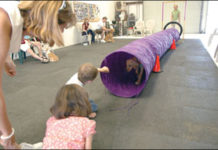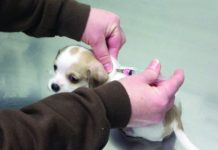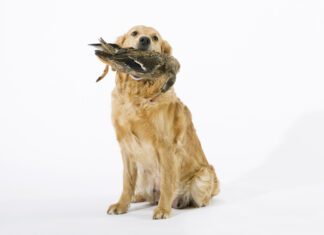Teaching Your Puppy Bite Inhibition
Some puppies have a naturally soft bite; some joyfully shred flesh without a hint of malice as they engage in normal interactions with the...
Conditioning Confidence in Your Dog or Puppy
There was once a time when you rarely encountered the word socialization" in dog circles. Today it's the new training buzzword; if you haven't heard it at least three dozen times by the time your dog is a dozen weeks old
Get Your Puppy Used to Body Handling
Teaching your puppy to be comfortable with human touch early on can help them to be comfortable with the needs of daily life with your family like putting on harnesses, washing paws before entering the house, and other needed tasks.
How to Get a Puppy to Sleep Through the Night
Puppies sleep schedules are irregular. Exercise, dimming lights, and companionship are great ways to get a puppy to sleep through the night.
Raising a Well-Adjusted Puppy
I used to pride myself on the fact that I had never been a so-called "foster failure." As most of you probably know, that's...
Shock Collars and Puppies
Naturally, we regard shock collars as absolutely unnecessary and inappropriate in any training program, but particularly so in training puppies and young dogs. Given the potential for an exceptionally strong fear response during the early fear period – as well as during the secondary fear period – it pains us greatly to see trainers who market their shock collar training even for very young puppies. Of course they mask the aversive nature of shock collars by calling them “electronic” or “e” collars and “electronic fences.”
How a Mother’s Stress Can Influence Unborn Puppies
Can a highly stressful environment during pregnancy affect how puppies turn out? Imagine this: A young dog goes stray and lives on urban streets for two months, in almost constant fear. Kids chase her down a street, throwing rocks at her; she is attacked by another dog; and she struggles every day to scavenge enough to eat. At last she is apprehended by an animal control officer and brought to a shelter. Here she finally gets enough to eat, but she's still not able to relax; the shelter is full of strange smells and loud noises, her run is small, and the floor is hard. After she's been at the shelter for a few weeks, a shelter staff member realizes that she is pregnant and due very soon. The shelter puts her on the waiting list for a foster home, knowing that puppies don't do well when they grow up in shelters.
When Can Puppies Leave Their Mom?
Deciding how long a puppy should stay with mom involves more than nursing—weaning a puppy too soon can be bad for the pup for many reasons.
Holistic Puppy Care Starts With The Parents
Responsible, holistic puppy care begins long before the puppy arrives at the homestead. In fact, the first step to creating a healthy puppy is the selection of the puppy’s parents! The best predictors of long-term health of puppies are the health history and personality of the parents. Breeding stock should be proven to be sound in body, mind, and socialization.
Puppy Vaccines: Why Your Puppy Needs So Many Shots
Puppy vaccine schedules can be daunting to new dog owners. Why do puppies need so many shots? Are all those puppy vaccinations really necessary? Most veterinarians recommend that puppies are vaccinated for distemper, parvovirus, and adenovirus (hepatitis) a number of times, starting when they are about four to six weeks old, and again every three or four weeks, with their last puppy vaccination" given after they are about 16 to 20 weeks old. "
Common Puppy Diseases
Some common illnesses in puppies are deadly. Vaccinate your puppy!
How an Intense Behavior Modification Program Saved One Puppy’s Life
Squid almost didn’t make it to the dog adoption option at the Humane Society of Washington County (HSWC), Maryland. Whole Dog Journal readers who have been with us for a year or more already know part of his story: the eight-week-old Jack Russell Terrier mix was surrendered to our full-service shelter by his owners because they “didn’t have time for him.” What that really meant was that the small white-and-tan pup was a heckuva handful: they couldn’t deal with his incredibly high energy level, fierce puppy play-biting, low tolerance for frustration, lack of impulse control, resource guarding, and sudden, intense aggression when restrained. He easily failed his canine behavior assessment. It’s a good thing he was impossibly cute! We started by identifying all Squid’s inappropriate behaviors and creating a modification plan for each. Some of the pieces overlapped, so it wasn’t quite as daunting as it might appear – but it was still plenty to work on!



















